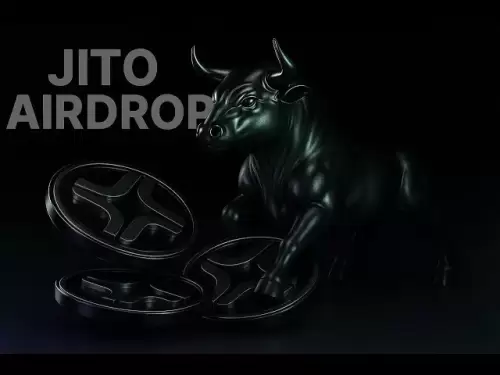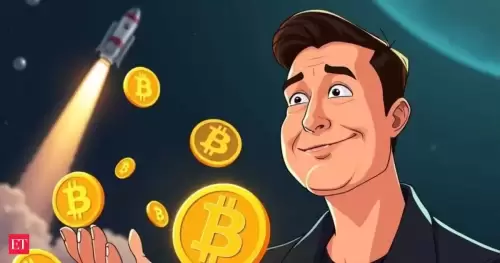 |
|
 |
|
 |
|
 |
|
 |
|
 |
|
 |
|
 |
|
 |
|
 |
|
 |
|
 |
|
 |
|
 |
|
 |
|
在過去的十年中,區塊鏈技術已從白皮書轉變為全球熱潮,然後從炒作浪中蒸餾出實用邏輯

In the past decade, blockchain technology has moved from a white paper to a global craze, then distilled practical logic from a hype wave, returning from "on-chain games" to solving "real-world problems." A typical representative of this trend that is increasingly being bet on by more capital and institutions is RWA (Real World Assets Tokenization).
在過去的十年中,區塊鏈技術已從白皮書轉變為全球熱潮,然後從炒作浪潮中蒸餾出實用的邏輯,從“鏈遊戲”返回到解決“現實世界中的問題”。 RWA(現實世界資產令牌化)是這一趨勢越來越多地押注的典型代表。
From the earliest Bitcoin and Ethereum, to the brief frenzy of NFTs, and now the rapidly advancing RWA, blockchain has always been answering one question: How to transform virtual technological advantages into financial value in reality?
從最早的比特幣和以太坊到NFT的簡短瘋狂,現在是迅速前進的RWA,區塊鏈一直在回答一個問題:如何將虛擬技術優勢轉變為現實中的財務價值?
Bitcoin's Revelation: The Ceiling of Technological Fundamentalism
比特幣的啟示:技術原教旨主義的上限
In 2009, the emergence of Bitcoin sparked a global cryptocurrency wave. It challenged the existing financial system with a completely chain-born decentralized model, attracting the faith of countless geeks and anti-mainstreamers. However, problems quickly surfaced: low transaction efficiency, high energy consumption, unclear value anchoring, and a singular application scenario. More importantly, it is too disconnected from the asset and value system of the real world.
2009年,比特幣的出現引發了全球加密貨幣浪潮。它通過完全連鎖的分散模型挑戰了現有的金融體系,吸引了無數的極客和反主流者的信仰。但是,問題迅速浮出水面:交易效率低,能耗高,價值錨定以及奇異的應用方案。更重要的是,它與現實世界的資產和價值體系脫節。
Bitcoin, as a "digital gold", is destined to exist more as a speculative value target rather than a true medium for the circulation of production factors. Especially in areas such as cross-chain operations, off-chain payments, and connections with fiat currency, it relies heavily on centralized exchanges and stablecoin systems, which makes the so-called "decentralized security" structurally fragile.
作為“數字黃金”,比特幣注定要成為投機價值目標,而不是生產因子循環的真正媒介。尤其是在跨鏈操作,鏈付款和與法定貨幣的連接等領域,它在很大程度上依賴著集中的交易所和穩定係統,這使所謂的“分散安全性”結構上易碎。
These issues have laid the groundwork for the emergence of RWA, hinting that "real needs have not yet been met".
這些問題為RWA的出現奠定了基礎,暗示“尚未滿足真正的需求”。
NFT Transition: The embryonic form of tokenization, but difficult to bear financial functions.
NFT過渡:令牌化的胚胎形式,但很難承擔財務功能。
The explosion of NFTs showed us for the first time that non-fungible assets in the real world can be encrypted, tokenized, and traded. CryptoPunks, BAYC, virtual land—these NFTs based on the Ethereum ERC-721 standard are no longer "purely chain-born assets", but are contrasted with artworks, intellectual property, and other values.
NFTS的爆炸率首次向我們展示了現實世界中的不可殺菌資產可以被加密,令牌化和交易。 Cryptopunk,BAYC,虛擬土地 - 這些基於以太坊ERC-721標準的NFT不再是“純粹的鏈出生資產”,而是與藝術品,知識產權和其他價值觀形成鮮明對比的。
However, the limitations of NFTs are also obvious:
但是,NFT的局限性也很明顯:
Most image and video storage is off-chain, posing a technical risk of disconnection;
大多數圖像和視頻存儲都是離鏈的,帶來了斷開連接的技術風險。
Market speculation is heavy, and value anchoring remains unclear;
市場投機很重,價值錨定尚不清楚。
Transaction infrastructure relies on centralized platforms, lacking a sustainable user base in the long term;
交易基礎設施依賴於集中式平台,從長遠來看,缺乏可持續的用戶基礎;
Under the existing legal and regulatory framework, the boundaries of NFT property rights are vague, making it difficult to form a compliant circulation logic.
在現有的法律和監管框架下,NFT財產權的界限含糊不清,因此很難形成合規的循環邏輯。
Although NFTs have opened a door for the concept of RWA, they cannot truly solve the systemic problem of "real assets being brought on-chain".
儘管NFT為RWA的概念打開了一扇門,但他們無法真正解決“真正的資產被帶入鏈”的系統問題。
The emergence of RWA: Bringing blockchain into the 'main subject' of the real world.
RWA的出現:將區塊鏈帶入現實世界的“主要主題”。
Unlike Bitcoin or NFTs, RWA is not about "creating a coin", but about bringing existing valuable assets in the real world on-chain and tokenizing them. Whether it is real estate, bonds, accounts receivable, copyrights, energy, or even data assets, the core of RWA is to enable traditional assets to be operated "on-chain", achieving efficiency improvement and market expansion.
與比特幣或NFT不同,RWA並不是要“創建硬幣”,而是要將現有寶貴資產帶到現實世界中的鍊鍊並將其化為它們。無論是房地產,債券,應收賬款,版權,能源甚至數據資產,RWA的核心都是使傳統資產能夠“鏈”運營,從而實現效率提高和市場擴張。
Core advantages:
核心優勢:
Breaking the isolation of traditional finance.: By standardizing different assets through tokens, we can lower transaction barriers;
打破傳統金融的隔離。
Enhancing liquidity: Turning originally non-standard, hard-to-circulate assets into globally tradable "digital shares";
提高流動性:最初不可匯入的,難以循環的資產變成全球可交易的“數字股票”;
Increasing trust and transparency: On-chain data is public and traceable, reducing intermediary and audit costs;
提高信任和透明度:鍊鍊數據是公開的,可追溯,降低了中介和審計成本;
Promoting financial inclusivity: Global users can participate in high-value asset transactions with a low threshold, disrupting the monopoly of traditional institutions.
促進財務包容性:全球用戶可以以低門檻參與高價值資產交易,從而破壞了傳統機構的壟斷。
The actual promoters of these types of assets include traditional financial giants such as BlackRock and Franklin Templeton, who have begun to tokenize bonds, government bonds, and other assets on-chain, and run models in real markets. Moreover, AI investment research platforms such as Mlion.ai have also begun to extract key data from the RWA track, supported by intelligent strategy diagrams, assisting users in identifying the real value and trading logic of assets in emerging markets.
這些類型的資產的實際發起人包括貝萊德(Blackrock)和富蘭克林·鄧普頓(Franklin Templeton)等傳統金融巨頭,他們已經開始將債券,政府債券和其他鏈接上的其他資產以及在真實市場上運行的模型。此外,諸如mlion.ai之類的人工智能投資研究平台也已開始從RWA軌道中提取關鍵數據,並在智能戰略圖的支持下,協助用戶確定新興市場中資產的實際價值和交易邏輯。
The problems still exist: The authenticity of underlying assets and regulatory compliance are hard injuries.
問題仍然存在:基本資產和法規依從性的真實性是嚴重傷害。
Although RWA has broad prospects, it is not without challenges, especially regarding the authenticity of assets, legal protection, and the implementation of on-chain governance mechanisms.
儘管RWA的前景廣泛,但這並非沒有挑戰,尤其是關於資產,法律保護和實施鏈政府機制的真實性。
How to confirm the real existence of the physical assets represented by on-chain tokens?
如何確認由鏈令牌代表的物理資產的實際存在?
How to handle legal actions such as asset ownership disputes and debt transfer?
如何處理諸如資產所有權爭議和債務轉移之類的法律行動?
How to construct a compliance trading framework under a multinational legal environment?
如何在跨國法律環境下構建合規性交易框架?
How to custody, clear, and settle on-chain assets to avoid pseudo-DeFi?
如何監護,清除和解決鏈上的資產以避免偽defi?
Currently, whether it is the on-chain evidence standards, regulatory reporting requirements, or tax audits and anti-money laundering systems, RWA faces extremely high demands. This is a significant reason why RWA needs the integration of technology, institutions, and financial logic.
目前,無論是鏈上證據標準,監管報告要求還是稅收審計和反洗錢系統,RWA都面臨著極高的需求。這是RWA需要整合技術,機構和財務邏輯的重要原因。
China's reality: Technological readiness VS Regulatory implementation.
中國的現實:技術準備與監管實施。
In China, to promote the healthy development of RWA, the following key
在中國,為了促進RWA的健康發展,這是以下關鍵
免責聲明:info@kdj.com
所提供的資訊並非交易建議。 kDJ.com對任何基於本文提供的資訊進行的投資不承擔任何責任。加密貨幣波動性較大,建議您充分研究後謹慎投資!
如果您認為本網站使用的內容侵犯了您的版權,請立即聯絡我們(info@kdj.com),我們將及時刪除。
-

-

-

-

-

- 日本的比特幣大富翁:Metaplanet領導
- 2025-07-28 23:37:22
- 日本公司正在比特幣領域進行大膽的行動,而Metaplanet領導了這一負責人。發現策略,風險和潛在的獎勵。
-

-

- 比特幣,菲亞特貶值和對沖:紐約人
- 2025-07-28 22:03:15
- 探索比特幣和黃金如何用作菲亞特貶值的樹籬,並從雷·達利奧(Ray Dalio)和最近的加密貨幣市場趨勢中獲得見解。比特幣是新黃金嗎?
-

- 特朗普媒體,比特幣和選擇:高風險賭博?
- 2025-07-28 22:01:22
- 特朗普媒體的大膽比特幣戰略,涉及3億美元的期權遊戲,與更廣泛的加密趨勢和政治敘事相交。是天才還是賭博?
-































































